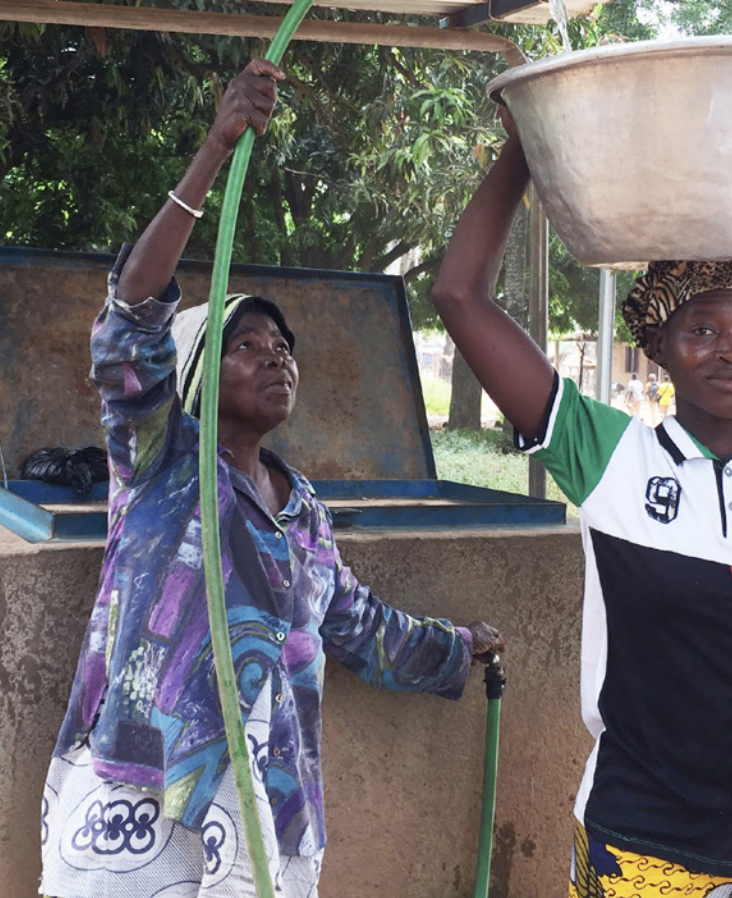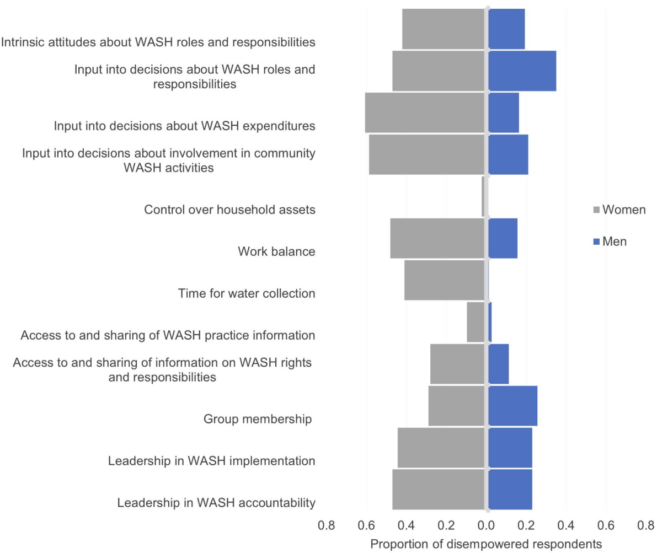Using EWI to inform the implementation of a WASH master plan in the municipality of Banfora, Burkina Faso

This case study is part of the SEI Urban Toolbox for Liveable Cities whichhas been developed by the SEI Initiative on City Health and Wellbeing. The Urban Toolbox isa collection of tools, developed within SEI or in coordination with SEI,aimed at supporting planning and decision-making for improving the health, well-being and resilience of city residents and urban systems more broadly. It demonstrates how EWI can be used to strengthen gender dimensions in WASH plans.
Introduction
The EWI was piloted in Banfora in South-West Burkina Faso. Based on the SDG service levels, access to safely managed water services is 0%, while access to basic water services is 69%, and the remainder of residents have unimproved or no services (Communede Banfora, 2018).
This case study site was chosen as it is a ‘commune’ (an administrative area part of Comoé province, which is part of Cascades region) where IRC, a global WASH NGO, is supporting the local government in the development and implementation of a master plan for water and sanitation service delivery for 2030.
The Banfora master plan will form the basis for annual action plans. Banfora is also a reference commune for the rest of the country in terms of water and sanitation practices, as it within the top ten communes in terms of water and sanitation access. This means it is an example to other communes so that lessons can be transferred. However, as the master plan did not involve gender analysis or gender specific indicators, the results from the EWI are relevant to ensuring that action plans address gender inequalities, with the potential to transfer lessons to other communes in Burkina Faso.
*This Urban Toolbox case study is an abridged version of the open access journal paper ‘Empowerment in water, sanitation and hygiene index’ in World Development, 137, which can be downloaded from the right-hand column. The SEI discussion brief, based on the same study, also informed this article. Please access the original texts for more detail, research purposes, full references, or to quote text.
Methodology
Data collection:
- The EWI uses individual-level survey data collected from a male and female respondent from the same household.
- A team of local enumerators were trained to conduct the survey using Qualtrics, a mobile phone application. Mobile phones were used to reduce time needed to conduct the survey, and with the aim that the survey module could be included in future data collection carried out by local or global WASH actors interested in adapting the EWI for their own research or evaluation purposes.
- Surveys were carried out targeting respondents who self-identified as the primary two members responsible for decision-making, both social and economic, within the household.
- Data was collected from 600 respondents in 20 rural and peri-urban communities.
Analysis:
- Survey data was analysed using the Empowerment in WASH Index
- To investigate associations between empowerment and other variables the Pearson’s chi-squaredtestwas conducted with age, education level, and housing material variables (as a socio-economic proxy). This was also carried out to investigate associations with level of access to water and sanitation facilities.
Outcomes and Impacts
Key findings:
- Men respondents were more empowered than women respondents in WASH.
- Women were more disempowered at the individual, household and community levels.
- Among disempowered respondents, the level of achievement was 48% for women and 57% for men, showing that women have further to go to reach empowerment.
- The indicators that contributed most to disempowerment for women in Banfora were: (1) input into household decisions on expenditure for water and sanitation; (2) input into household decisions to participate in community WASH activities; (3) work balance; and (4) comfort in interactions with WASH authorities or local institutions to make complaints about services.
- The Pearson’s chi-squared test showed that more empowered women than disempowered women used a water source on premises or an improved sanitation facility; indicating that empowerment has important implications for WASH service delivery.

Conclusions:
- The EWI tool can provide concrete evidence of which respondents are most disempowered, which can facilitate targeting of actions within sector development plans.
- Not only can the quantitative information that the EWI provides help stakeholders to prioritize factors that contribute to disempowerment, the data can also help make the case for taking gender disparities in WASH seriously.
- The findings indicated the importance of community and household level dynamics in contributing to empowerment, such as household decision-making, which have often been overlooked in WASH interventions despite their importance in influencing outcomes, and their recognition in other sectors.
- This will support the push for decision-makers to prioritize investments in, and practitioners to implement, inclusive WASH service delivery.
Suggested Citations:
Journal article:Dickin, S., Bisung, E., Nansi, J. and Charles, K. (2021). Empowerment in water, sanitation and hygiene index. World Development,137, https://doi.org/10.1016/j.worlddev.2020.105158.
Discussion brief: Dickin, S. and Bisung, E. (2019). Empowerment in WASH Index. SEI Discussion Brief, Oct. 2019. Stockholm Environment Institute, Stockholm
(0) Comments
There is no content